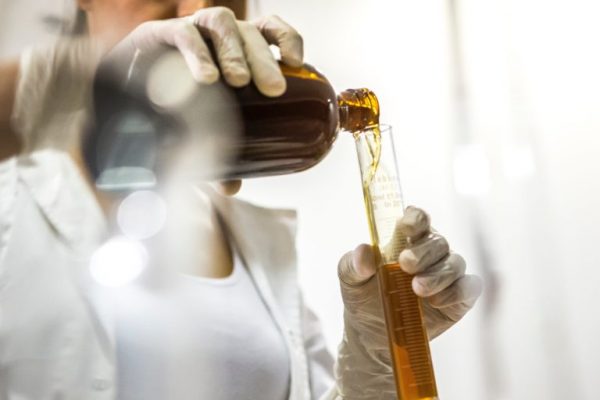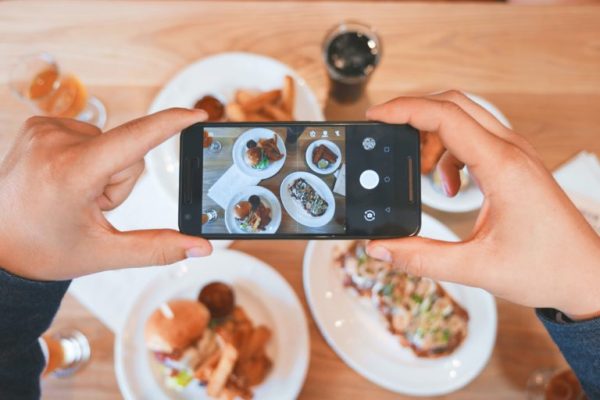
Food innovation – the journey is as important as the end result
Are you responsible for food innovation within your organization? That is is no easy task at this time in which we are dealing with erratic consumer behaviour, demanding customers (retailers), critical colleagues, rapidly developing technology, limited budgets and growing demands in the field of sustainability and health.
Food by Design has over 20 years of experience in food innovation and understands the challenge you are facing. In this blog we’ll give you 5 tips on food innovation, which you hopefully can use to your advantage. It is important to realize that the end product is just as important as the journey. These tips can be applied to supermarket products, B2B players, retail formulas, high tech start-ups or restaurants.
1. Think carefully about your project planning in advance
As mentioned, we see every innovation project as a journey. The design of this journey requires as much attention as the final outcome itself. It is wise to appoint a “core team” and an “extended team” beforehand. With the core team you will need you to define the scope and make choices, while you use the extended team to tap into broader insights and ideas. Food by Design always builds our journey in roughly 5 stages; strategy, research and inspiration, ideation, concepting and realization. This is a proven structure that has also been taught at the TUDelft at Industrial Design for many years. In a good food innovation process, divergent and convergent thinking alternate. In a divergent phase, the aim is to go as broad as possible. Every idea is a good idea. In fact, the more ideas the better. In a convergent phase, choices will be made. The criteria will be set, and you will decide which ideas will fit those do and which don’t. In this way, the process is actually a funnel. It starts broad and ends with 1 to a few concepts that are worked out in detail.

Work multi-disciplinary and look beyond the boundaries of disciplines
2. Work multidisciplinary
Food innovation is not the responsibility of 1 person or 1 department. It is about your company’s accumulated expertise. That’s why we always make multi-disciplinary teams that always include someone from marketing and product development. But other disciplines are also represented, such as market research, purchasing, sales, logistics, business development, general management and CSR. Of course, the degree of specialisation and the team size of your company depends on the size of the company. But whether you are a small start-up or work in a large multinational, thinking from different disciplines is essential to achieve cross-border innovation. And in addition to official disciplines, it is also important to feel free as an individual to look across borders. Who says you don’t know anything about fermentation, digital technology, online marketing or the latest health perspectives? Be ultimately curious and stretch yourself beyond the boundaries of your field of expertise. The power of successful innovation often lies in holistic concepts, which have to sprout somewhere in a person’s brain. So, above all, feel free to get involved in things that do not really are in your job description.

Look from the inside out and from the outside in
3. Think inside-out and outside-in
It is important to keep your visor open during the entire food innovation process. Your company has a right to exist because it solves something in the world outside your company. And although customer-focused thinking is now a well-established term, it remains a challenge. That’s why we always weave a connection with that outside world throughout the entire process. In the inspiration phase we often give a presentation on food trends, in which we visualize the latest developments in buying, cooking and eating behaviour in an inspiring way. Sometimes we go out with customers and take a trend tour through trendsetting food hotspots at home and abroad. We like to talk to consumers in order to gain insights about user tensions. It’s great if you can do this in collaboration with a real market research agency, but if budgets are smaller, it can also be organized in a pragmatic manner. During brainstorming sessions, we often invite experts, ‘extreme users’, suppliers or customers to make use of their fresh perspectives. When the innovation starts to take shape, it is also important to get feedback as soon as possible and to optimize the details as long as possible.

4. Take advantage of food design thinking
Although there is a good chance that you or your colleagues are not designers, design thinking has become a very proven method for successful innovation. It is also a powerful working method for non-designers. It is now taught at many universities and business schools such as Harvard. We therefore strongly recommend that you read a book about it. For example, the book ‘Change by Design’ by Tim Brown, founder of America’s most famous design and innovation agency IDEO. Steve Jobs was also a design thinker by nature. Design thinking is an optimistic and holistic method of achieving innovation. Where the user is central and where ideas are visualized or prototyped in an early stage in the process. New insights are constantly being retrieved and improved towards a better end result in loops. We find this method very relevant for food, because eating and drinking is very sensory. And that makes it less easy to imagine behind a computer or a lab. It’s also not just about the food itself but about the total of presentation, packaging, brand, the creation, the preparation ritual and the name. That ensemble needs to be developed as a coherent whole. That’s why we regularly include proto-type sessions in our innovation trajectories to explore new ideas while blinking, sticking, sketching, cooking, packaging.

Storytelling 2.0> contribute to the story of your consumer’s life
5. Think conceptually, tell a story
Nowadays, a product that just tastes good is no longer enough to make a real difference. Today’s consumers want a product that stands for something, forms a memory and tells a story. Storytelling is a common word today, but for many people it remains elusive. What exactly is a story? And how do you develop it? Storytelling is so much more than a mandatory list of how your product is made, what it ingredients are in there and how sustainable it is. Storytelling is about brands and concepts that indicate a development in the world and how they interpret it in a unique way. What role they play in this with their own recognizable tone-of-voice so consumers can identify with it. And we also see a storytelling 2.0 glowing on the horizon. Until recently, brands were busy getting their own story in order, in the future it will become increasingly important to contribute to the story of your consumer. Millenials and Gen Z are storytellers pur sang. They live their lives in such a way that it’s actually one big story. They carefully choose their products, brands and experiences to contribute to their story line. For themselves, but also to share with the outside world through social media. So think about your innovation in this way; how does it contribute to the story that my consumers live? Even if your company is a B2B player, there is a consumer at the end of every B2B2B2C chain.
Good luck with your food innovation project!
We hope these 5 tips will help you to design a powerful process and develop a successful food innovation. If you have any questions, please let us know and contact us. We’d love to think along with you, coach you or possibly take care of some difficult challenges you might face. Let’s create a good food future together!
